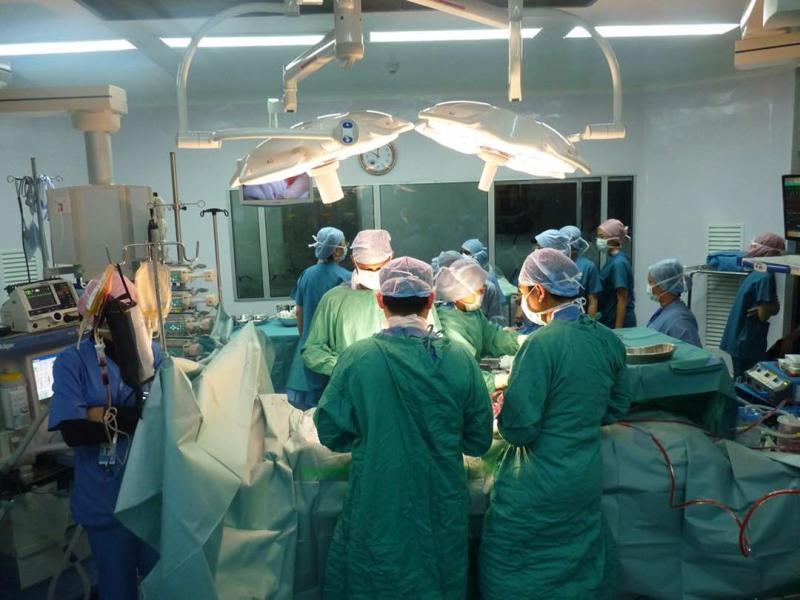 An organ transplant surgery taken place with the “most well-respected manner,” reassures Dr Hirman. Photo credit: Dr Hasdy Haron, clinical manager at National Transplant Resource Centre, Malaysia.
An organ transplant surgery taken place with the “most well-respected manner,” reassures Dr Hirman. Photo credit: Dr Hasdy Haron, clinical manager at National Transplant Resource Centre, Malaysia.Malnutrition, anaemia and body mass index (BMI) have long-term repercussions on the survival of older patients after noncardiac surgery, according to a recent Singapore study.
“[T]he aim of this study is to look at factors associated with increased 1-year mortality after noncardiac surgery, enabling us to identify high risk groups of patients, which would allow effective patient selection, risk stratification, appropriate patient counselling, surgical planning and preoperative optimization,” said researchers.
Researchers conducted a retrospective cohort investigation of 2,163 older patients (aged >45 years; 53.4 percent male) undergoing noncardiac surgery. Majority were of the American Society of Anaesthesiologists 2 (47.4 percent) and 3 (44.3 percent). More than a quarter (28.3 percent) required emergency surgery. [BMC Surg 2020;20:11]
Participants required operations that fell under a wide variety of surgical disciplines, such as thoracic and vascular surgeries, ophthalmology and otolaryngology surgeries, neurosurgery, orthopaedics, general surgery, and urology, obstetrics and gynaecology procedures. Most operations lasted for <2 hours, and 85.1 percent were performed under general anaesthesia.
There were 127 deaths reported, yielding a 1-year mortality rate of 5.9 percent. Multivariate logistic analysis revealed that being older (adjusted odds ratio [OR], 1.04, 95 percent confidence interval [CI], 1.01–1.06; p=0.004) was a significant risk factor for 1-year mortality, as was being of Malay or Indian ethnicity, or belonging to any minority ethnic group (adjusted OR, 2.68, 95 percent CI, 1.53–4.65; p=0.001).
Anaemia also emerged as a significant risk factor, regardless of whether it was taken as a continuous (adjusted OR, 1.32 for every 1-g/dL drop in haemoglobin, 95 percent CI, 1.15–1.47; p<0.001) or categorical (moderate: adjusted OR, 4.05, 95 percent CI, 1.16–1.47; p<0.001; severe anaemia: adjusted OR, 9.20, 95 percent CI, 3.05–27.71; p<0.001) variable. Smoking likewise increased 1-year mortality risk (adjusted OR, 2.17, 95 percent CI, 1.02–4.45; p=0.044).
Lower BMI also increased the likelihood of death (adjusted OR, 0.93 for every 1-unit increase in BMI, 95 percent CI, 0.87–0.98; p=0.005). Other important risk factors included peripheral vascular disease, emergency surgery and malignancies.
“We acknowledge the limitations of a retrospective study. However, as mortality is a rare and unpredictable outcome, it would be challenging to conduct such a study prospectively,” said researchers. “Furthermore, unlike studies done on large databases, the integrity of our data was ensured by having members of the research team manually verify the variables and outcomes against patients’ medical records to ensure accuracy.”
This study stresses the need for timely identification and treatment of preoperative anaemia and malnutrition, and smoking cessation. Further large-scale studies are warranted to develop a risk scoring system for risk stratification, counselling and surgical planning, according to researchers.